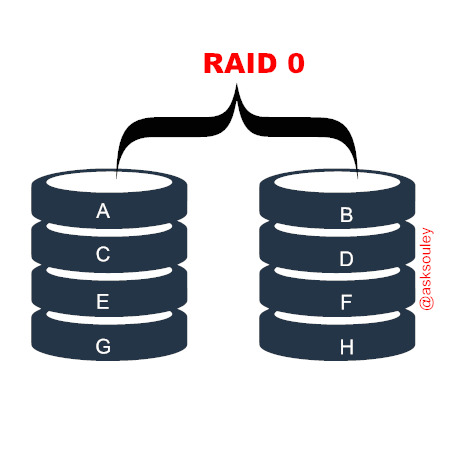RAID 0
RAID acronym for Redundant Array of Independ Disks. It is a well-known data storage technology that uses stripping, mirroring or parity to store data on a set of drives or disks. A RAID is implemented when two or more disks or drives are combined together in a logical unit to increase the performance, or redundancy or both. The term was coined by David Patterson and some a couple of his colleagues from the University of California Berkeley in the late 80'S.
There are different levels of RAID that can implemented according to the user's specific need ranging from RAID 0 to RAID 10. In this article we I will be going in depth on RAID 0 also known as "striping ". I will also be skipping any hardware or software requirement need to implement a RAID. That will be covered in a different blog post in depth. The other type of RAID will also be covered in later blog posts.
Requirement:
Before implementing a RAID 0, there is a minimum of two drives or disks that are required.
When RAID 0 is implemented, when data is stripped into a block and then spread across at least 2 disks drives or (HHD/SSD) in the array. Just like any technology implementation, RAID 0 has its advantages and drawbacks
The main advantage of RAID 0 is speed. In a RAID 0 configuration, you have fast write and read. Let's say you have a set of Data A.B, C, D, E. In RAID 0 configuration with 2 drives 1 and 2. Data A will written to Disk 1, data B, on disk 2, data C on disk 1, so one and so forth. All the data will be stripped across the drives thus increasing the read and write speed. Let's say you have a RAID 0 made of 2 drives each having 150 IOPS (Input/output Operation per Second), you will end up with a read and write speed of both drivers combined therefore, a 300 IOPS.
It is also worth mentioning that in RAID 0, there are no waisted storage space. 100% of the disk are utilized unlike in the other RAID configuration.
The Drawbacks of RAID 0 is the lack of reliability due do the lack of redundancy. If one drive fails, all the data will be lost. As a result, RAID 0 is suitable for use cases where speed is valued more than reliability and should not be used for mission critical storage.
When you subscribe to the blog, we will send you an e-mail when there are new updates on the site so you wouldn't miss them.



Comments